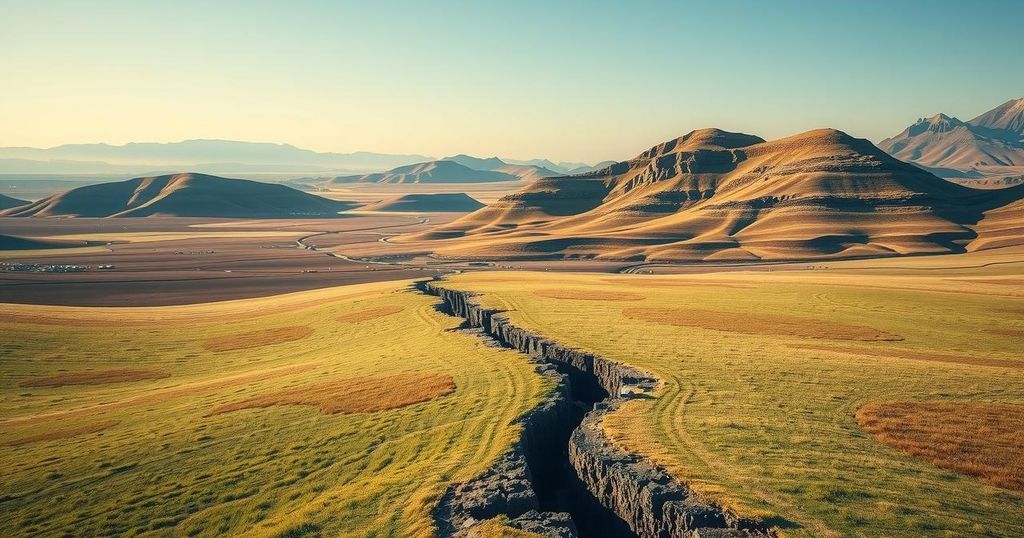New research clarifies that a significant earthquake in Iran was not caused by a nuclear test, as initially speculated. The comprehensive analysis of seismic data suggests a natural origin for the 4.5 magnitude quake, contradicting widespread misinformation on social media. This investigation emphasizes the importance of accurate scientific reporting, particularly in volatile geopolitical contexts.
Recent research has dispelled the theory that a significant earthquake in Iran was instigated by a nuclear test. This investigation, led by American scientists, determines that the 4.5 magnitude quake was a natural seismic event, contrary to assertions circulating on social media and various news platforms during October 2024, amid rising tensions in the region. The findings, published in the journal Seismica, underscore the risks of misinterpreting scientific data during geopolitical crises.
Dr. Benjamin Fernando, a seismologist at Johns Hopkins University, highlighted the dissemination of misinformation regarding the quake. He stated, “There was a concerted misinformation and disinformation campaign around this event that promoted the idea this was a nuclear test, which is not something you often see happen with an earthquake.” The earthquake struck on October 5, 2024, near the earthquake-prone Semnan area in Iran and was analyzed by Dr. Fernando’s team.
Utilizing data from seismic monitoring stations, the team concluded that the quake was caused by natural forces related to the shifting of tectonic plates in the region, specifically a reverse fault scenario as the Arabian and Eurasian plates collide. This natural occurrence is distinctly different from the explosive signatures associated with nuclear tests. The Comprehensive Test Ban Treaty Organisation (CTBTO) also reported similar unrelated seismic activities occurring in the same area in previous years.
Despite clear evidence supporting the natural origin of the quake, initial claims of a nuclear test emerged on social media shortly after the event, fueled by erroneous interpretations of seismic data. A mention of a nuclear test appeared within 27 minutes of the earthquake. Some of the misinformation was linked to conspiracy theories that incorrectly associated the Iranian quake with another seismic event in Israel.
Dr. Fernando noted the difficulty in identifying deliberate disinformation but indicated that the sophisticated engagement with seismic data on social media might point to informed participation. Notably, one of the prominent posts advancing the nuclear test narrative was traced back to an account connected to Russian-backed disinformation activities. Subsequently, the incorrect narrative proliferated into global news outlets, with significant reporting from Indian English-language media.
The research team advised enhanced collaboration among seismologists to rapidly address and correct scientific data misinterpretations. Dr. Saman Karimi, a co-author from Johns Hopkins, suggested that scientific authorities could issue prompt reports to counter misinformation effectively. She emphasized the potential of partnerships between social media platforms and trusted scientific institutions, such as the US Geological Survey, to mitigate the influence of false narratives.
Understanding the geopolitical context of misinformation surrounding seismic events is vital. Recent tensions in the Middle East have heightened scrutiny of seismic activities, particularly those occurring in Iran, a nation historically sensitive to military and nuclear implications. The conflation of scientific data and political narratives can lead to significant misunderstandings, highlighting the importance of accurate scientific communication in conflict situations. This study serves as a critical reminder of the need for vigilance against misinformation during geopolitical crises.
The study confirms that the earthquake in Iran was a naturally occurring seismic event, not a nuclear test. Despite the rapid spread of misinformation via social media, scientific evidence supports the geological activity typical of the region. This situation highlights the necessity for effective communication strategies from scientific communities to counter misinformation and ensure the public receives accurate information during crises. Increased collaboration between scientists and media platforms is essential to mitigate the impacts of disinformation.
Original Source: www.newsbug.info






